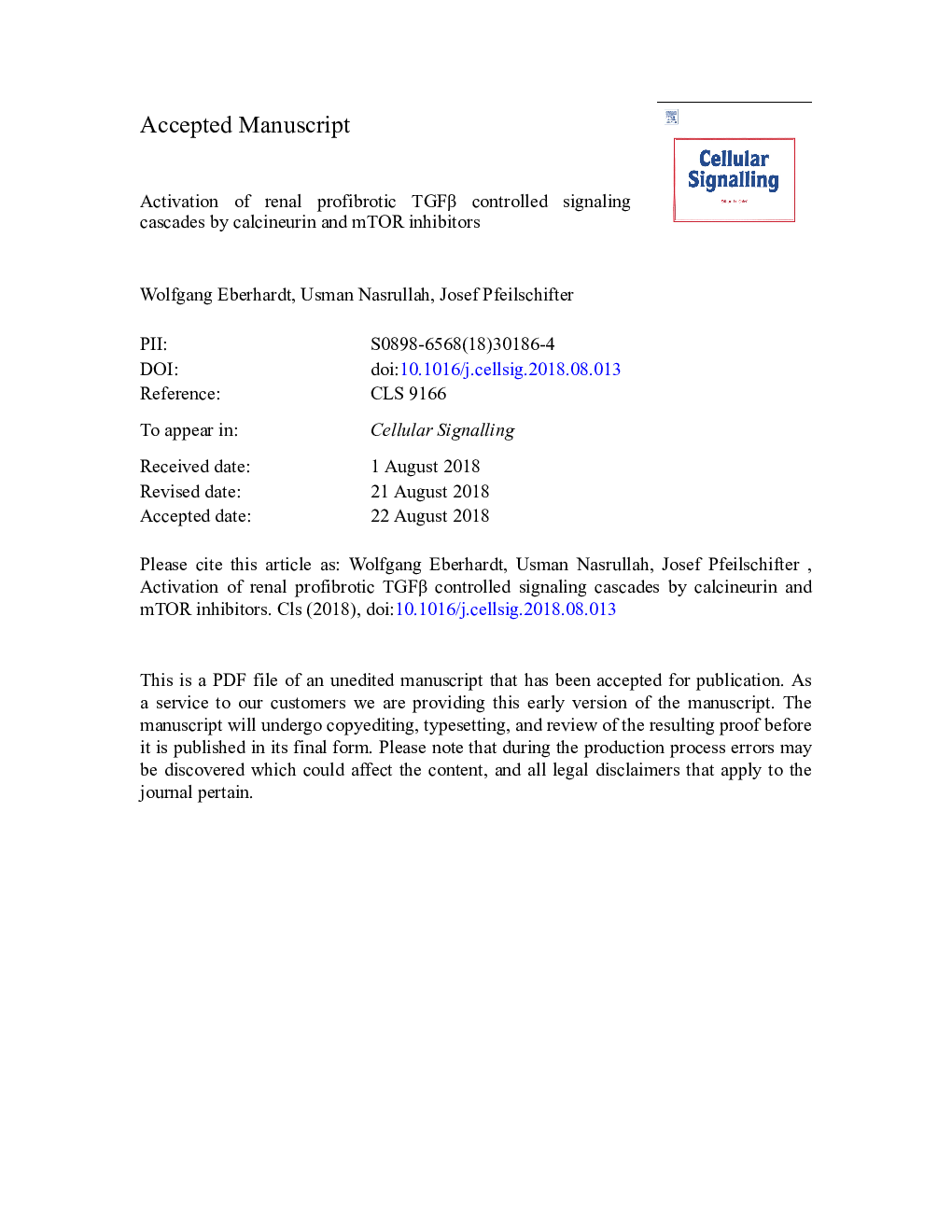| Article ID | Journal | Published Year | Pages | File Type |
|---|---|---|---|---|
| 8956038 | Cellular Signalling | 2018 | 39 Pages |
Abstract
The calcineurin inhibitors (CNI) cyclosporine A (CsA) and tacrolimus represent potent immunosuppressive agents frequently used for solid organ transplantation and treatment of autoimmune disorders. Despite of their immense therapeutic benefits, residual fibrosis mainly in the kidney represents a common side effect of long-term therapy with CNI. Regardless of the immunosuppressive action, an increasing body of evidence implicates that a drug-induced increase in TGFβ and subsequent activation of TGFβ-initiated signaling pathways is closely associated with the development and progression of CNI-induced nephropathy. Mechanistically, an increase in reactive oxygen species (ROS) generation due to drug-induced changes in the intracellular redox homeostasis functions as an important trigger of the profibrotic signaling cascades activated under therapy with CNI. Although, inhibitors of the mechanistic target of rapamycin (mTOR) kinase have firmly been established as alternative compounds with a lower nephrotoxic potential, an activation of fibrogenic signaling cascades has been reported for these drugs as well. This review will comprehensively summarize recent advances in the understanding of profibrotic signaling events modulated by these widely used compounds with a specific focus put on mechanisms occurring independent of their respective immunosuppressive action. Herein, the impact of redox modulation, the activation of canonical TGFβ and non-Smad pathways and modulation of autophagy by both classes of immunosuppressive drugs will be highlighted and discussed in a broader perspective. The comprehensive knowledge of profibrotic signaling events specifically accompanying the immunomodulatory activity of these widely used drugs is needed for a reliable benefit-risk assessment under therapeutic regimens.
Keywords
Latency-associated proteinLAPCNITβRECMAP-1ERKJun N-terminal kinaseTGFβFKBPmTORJnkTGFβ receptorMMPNF-κBMAPKMAPK/ERK kinaseROSepithelial to mesenchymal transitionTransforming growth factor βEMTSODmesangial cellsSuperoxide dismutaseextracellular signal regulated kinasenuclear factor κBFibrosisExtracellular matrixmatrix metalloproteinaseMEKCalcineurin inhibitorsmTOR inhibitorsMechanistic target of rapamycinFK506 binding proteinactivator protein 1mitogen activated protein kinaseReactive oxygen species
Related Topics
Life Sciences
Biochemistry, Genetics and Molecular Biology
Biochemistry
Authors
Wolfgang Eberhardt, Usman Nasrullah, Josef Pfeilschifter,
